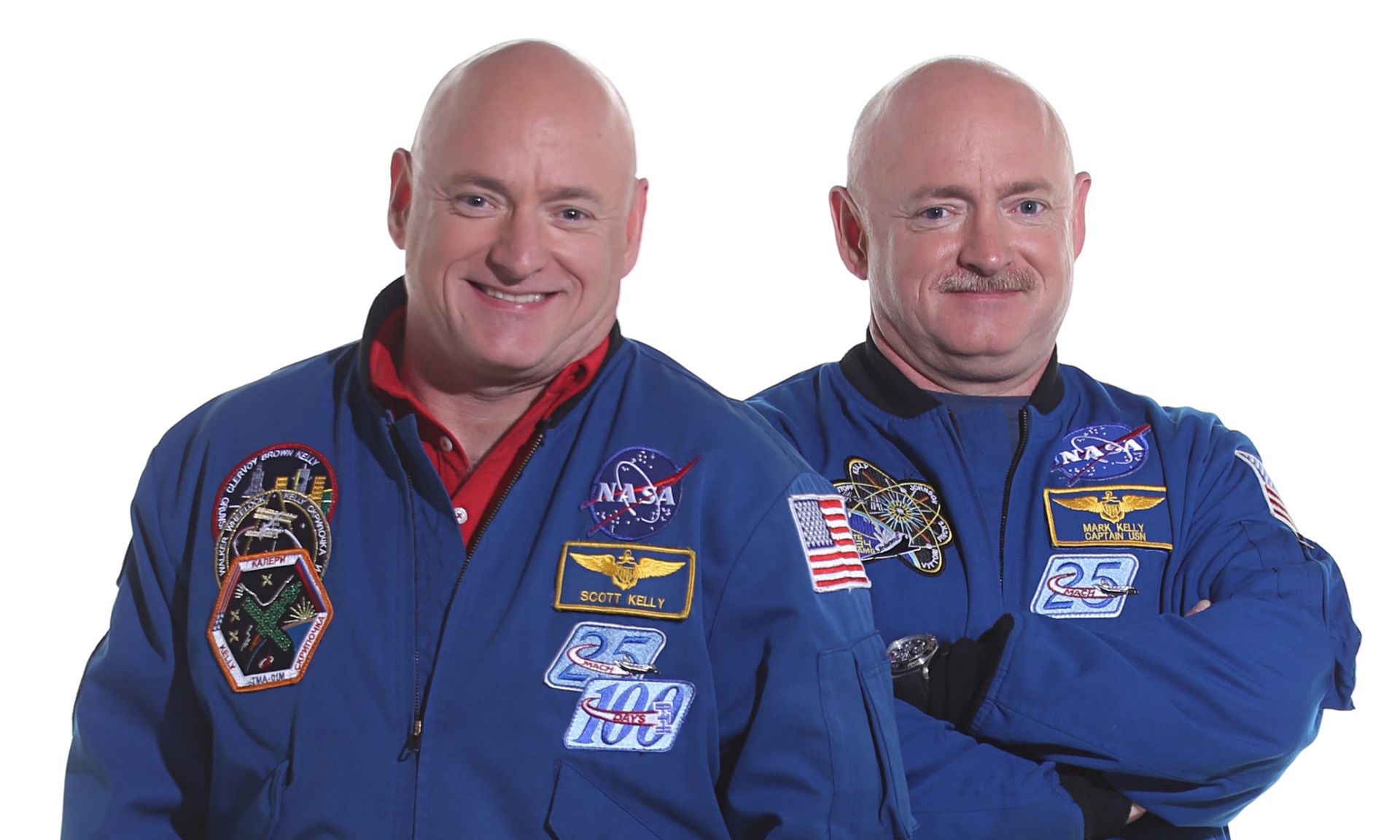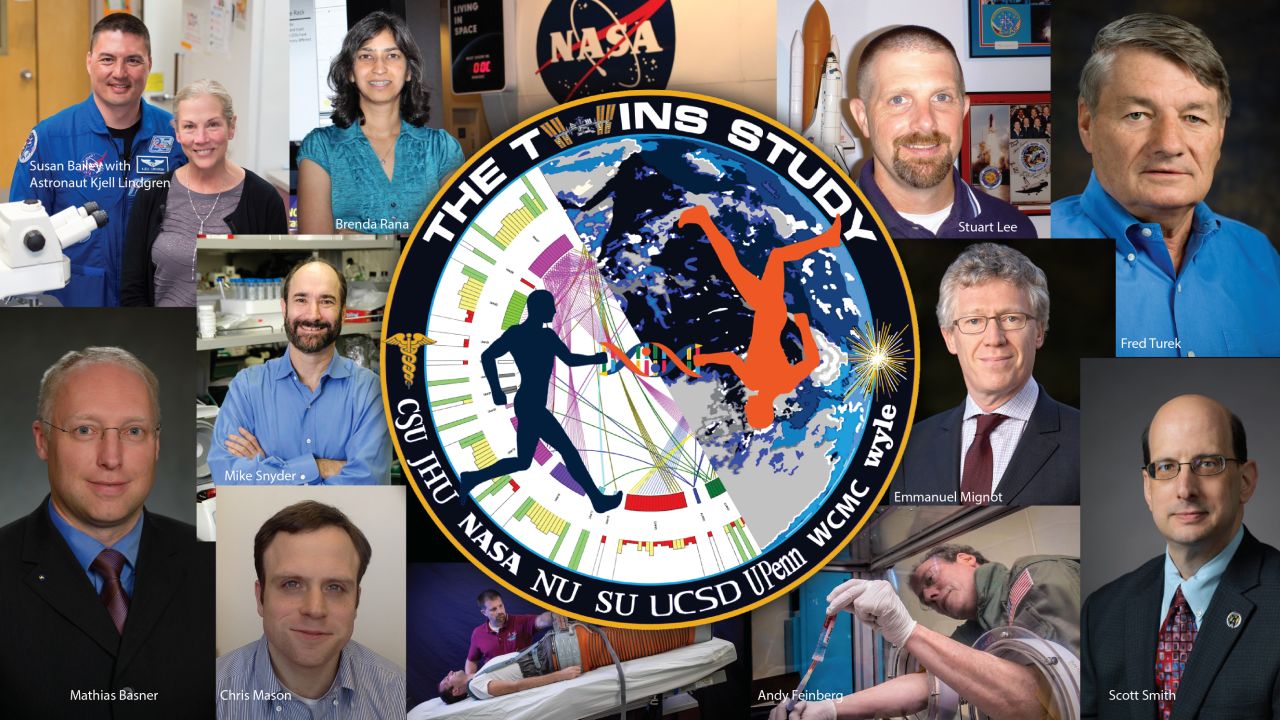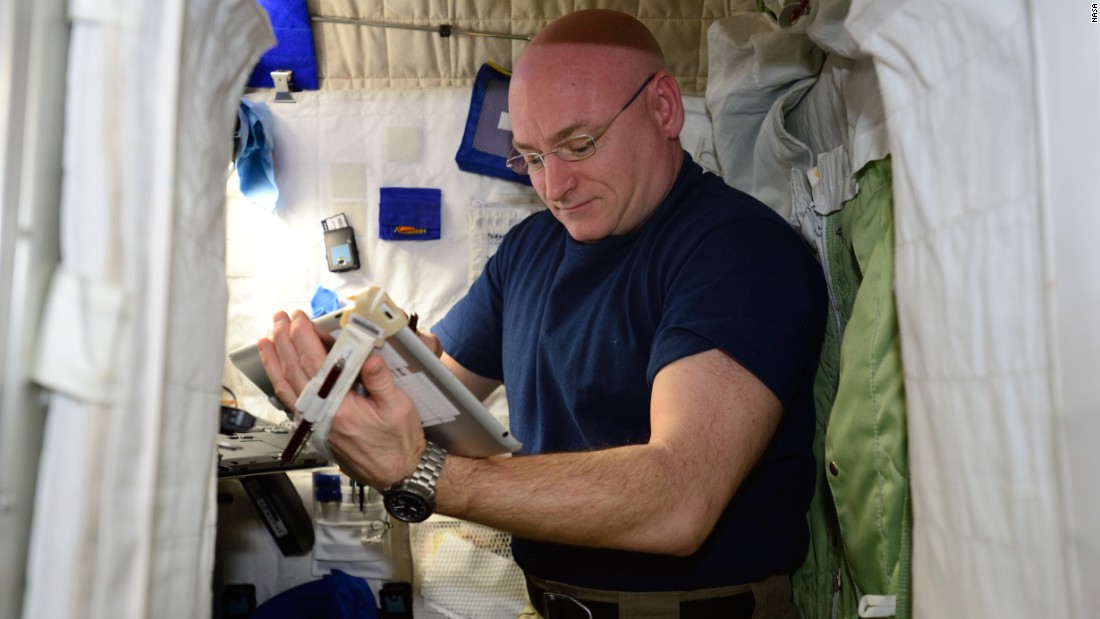So, here’s the deal—imagine two identical twins, both with the same DNA, same upbringing, and the same career path. But then, one gets to blast off into space for almost a year while the other stays grounded on Earth. Sounds like something outta a sci-fi movie, right? Well, that's exactly what NASA's Twins Study is all about. This groundbreaking research dives deep into how the human body adapts to space and uncovers some mind-blowing findings that could change the future of space exploration.
Now, buckle up because we’re diving headfirst into this wild ride of science, biology, and the cosmos. The Twins Study wasn’t just another experiment—it was a game-changer. By comparing astronaut Scott Kelly (who spent 340 days aboard the International Space Station) with his Earth-bound brother Mark Kelly, scientists got a front-row seat to see how space affects the human body at a genetic level. Spoiler alert: it’s not all sunshine and rainbows.
But why does this matter? Well, as humanity sets its sights on missions to Mars and beyond, understanding how our bodies handle the harsh conditions of space is crucial. This isn’t just about astronauts—it’s about all of us. If humans are ever gonna live among the stars, we need to figure out what happens to our bodies when we leave the comfort of Earth’s atmosphere.
What Exactly is NASA's Twins Study?
Let’s break it down: The Twins Study was basically NASA’s way of asking, “What happens to your body when you spend a year in space?” To answer this question, they turned to the ultimate guinea pigs—identical twins Scott and Mark Kelly. Scott went on a year-long mission to the ISS, while Mark stayed right here on Earth. Scientists then compared everything from their DNA to their gut bacteria to see how space affected Scott compared to his brother.
This study wasn’t just a one-off project. It involved ten different research teams working together to analyze various aspects of Scott’s health. From changes in gene expression to shifts in cognitive performance, the data collected was massive and detailed. And guess what? The results were nothing short of surprising.
Why Did NASA Choose Twins for This Study?
Here’s the thing—using twins was a genius move by NASA. Since Scott and Mark share the same genetic makeup, it allowed scientists to isolate the effects of space travel without worrying about other variables like genetics or lifestyle differences. Think about it: if you’re comparing two random people, there are so many factors that could mess up the results. But with twins? It’s like having a perfect control group.
Plus, the fact that Scott and Mark are both experienced astronauts made the study even more reliable. They’ve been exposed to similar environments and training throughout their careers, which means any changes observed in Scott can be more confidently attributed to his time in space.
Key Findings from the Study
Alright, let’s get into the juicy stuff. What did NASA actually discover during this experiment? Here are some of the most surprising findings:
- Gene Expression Changes: Scott’s genes didn’t mutate in space, but their expression—how active or inactive they were—did change significantly. Some of these changes persisted even after he returned to Earth.
- Epigenetic Alterations: Epigenetics refers to changes in how genes are turned on or off without altering the actual DNA sequence. The study found that Scott experienced epigenetic changes during his time in space, particularly in genes related to immune function and DNA repair.
- Cognitive Decline: After returning to Earth, Scott showed a slight decline in cognitive performance compared to Mark. This could be due to factors like fatigue, re-adapting to gravity, or exposure to space radiation.
- Gut Microbiome Shifts: Scott’s gut microbiome changed dramatically during his time in space. While it returned mostly to normal after he came back, some differences remained.
These findings have huge implications for long-term space travel. They show us that space isn’t just physically demanding—it can also affect us at a molecular level.
How Did Space Affect Scott Kelly’s Body?
Let’s zoom in on Scott’s experience. Spending nearly a year in space isn’t exactly a walk in the park. Here’s a quick rundown of how his body reacted:
- Lengthening of Telomeres: Surprisingly, Scott’s telomeres—the protective caps at the ends of chromosomes—actually grew longer in space. However, they quickly shortened again once he returned to Earth. This could be linked to increased physical activity and reduced caloric intake during his mission.
- Inflammation and Stress: Scott experienced higher levels of inflammation and oxidative stress in space, likely due to factors like microgravity and cosmic radiation.
- Changes in Vision: Like many astronauts, Scott reported changes in his vision during his time in space. This is thought to be caused by fluid shifts in the body due to microgravity.
It’s wild to think that all these changes were happening inside Scott’s body while he was floating around up there. But hey, that’s science for you—full of twists and turns.
What Do These Findings Mean for Future Space Exploration?
So, now that we know what happened to Scott Kelly, what does it mean for the future of space exploration? Well, the implications are huge. For one, it highlights the importance of understanding how space affects human biology before we send people on long-term missions to places like Mars.
Here are a few key takeaways:
- Protecting Astronaut Health: Scientists need to develop strategies to mitigate the negative effects of space travel on the human body. This could include everything from improved exercise regimens to better radiation shielding.
- Personalized Medicine: The findings suggest that personalized medicine might play a big role in future space missions. By tailoring interventions to individual astronauts, we can help them stay healthier during long-duration flights.
- Long-Term Adaptation: Understanding how the body adapts to space over time is critical for planning missions that last years instead of months. This includes studying how the body responds to prolonged exposure to microgravity and radiation.
Basically, this study shows us that sending humans to space isn’t as simple as strapping them into a rocket and blasting off. We need to be prepared for the challenges that come with living in an environment so different from Earth.
Challenges and Opportunities
While the findings from the Twins Study are fascinating, they also raise some tough questions. For example, how do we ensure the safety of astronauts on long-term missions? And how can we address the ethical concerns surrounding space exploration?
At the same time, though, the study opens up exciting opportunities for research and innovation. By continuing to study the effects of space on the human body, we can develop new technologies and treatments that benefit not only astronauts but also people here on Earth.
Who Are Scott and Mark Kelly?
Before we dive deeper into the science, let’s talk a bit about the stars of the show—Scott and Mark Kelly. These two aren’t just any twins; they’re both accomplished astronauts with impressive resumes. Here’s a quick rundown of their backgrounds:
| Name | Born | Career Highlights | Notable Missions |
|---|---|---|---|
| Scott Kelly | February 21, 1964 | Retired NASA Astronaut, former Navy Captain | STS-103, STS-118, Expedition 26/27, Year in Space Mission |
| Mark Kelly | February 21, 1964 | Retired NASA Astronaut, former Navy Captain, US Senator | STS-108, STS-121, STS-124, STS-134 |
As you can see, these guys know a thing or two about space. Their combined experience made them the perfect candidates for the Twins Study.
How Was the Study Conducted?
Now, let’s talk about the nitty-gritty details of how the study was conducted. First, NASA recruited ten research teams from across the country to focus on different aspects of Scott’s health. These teams looked at everything from his cardiovascular system to his immune response to his genetic makeup.
Before Scott’s mission, both brothers underwent extensive testing to establish a baseline. Then, throughout Scott’s time in space, scientists collected samples and data to track changes in his body. After he returned, they continued monitoring him for months to see how his body adjusted back to Earth’s gravity.
Techniques and Tools Used
The study relied on cutting-edge technology and techniques to gather data. Some of the tools used included:
- Genomic Sequencing: To analyze changes in Scott’s DNA and gene expression.
- Metabolomics: To study metabolic changes in his body.
- Imaging Techniques: To examine structural changes in his brain and other organs.
By using such advanced methods, scientists were able to paint a comprehensive picture of how space affected Scott’s body.
What Do Experts Say About the Study?
Of course, no scientific study is complete without expert opinions. Many researchers have praised the Twins Study for its innovative approach and groundbreaking findings. Dr. Andrew Feinberg, one of the study’s lead investigators, called it “a once-in-a-lifetime opportunity” to study the effects of space on the human body.
However, some experts have pointed out limitations in the study. For example, since it only involved two people, the sample size is pretty small. That means we can’t necessarily generalize the findings to all astronauts. Still, most agree that the study provides valuable insights that will inform future research.
Looking Ahead: The Next Steps
So, where do we go from here? Well, NASA has already started planning follow-up studies to build on the Twins Study’s findings. These studies will involve more astronauts and focus on specific areas of interest, like the effects of space radiation on the human body.
Additionally, private companies like SpaceX and Blue Origin are investing heavily in space exploration. As commercial space travel becomes more common, understanding how the human body adapts to space will become even more important.
Why Should You Care About This Study?
Okay, so maybe you’re not an astronaut or a rocket scientist. But trust me, this study matters to everyone. Why? Because it’s not just about space—it’s about pushing the boundaries of what humans are capable of. The knowledge gained from the Twins Study could lead to breakthroughs in medicine, biology, and technology that benefit all of us.
For example, the study’s findings on gene expression and epigenetics could help us develop new treatments for diseases here on Earth. And the research on cognitive decline might lead to better ways to prevent dementia and other neurological conditions.
Final Thoughts: What Does the Future Hold?
As we wrap up this deep dive into NASA’s Twins Study, one thing is clear: the future of space exploration is bright. Thanks to studies like this, we’re learning more every day about how to safely send humans to the stars. But it’s not just about space—it’s about improving life here on Earth too.
So, what can you do? First, stay curious. Keep learning about the amazing things happening in science and technology. Second, support efforts to fund space research. And finally, share this article with your friends and family to spread the word about the incredible work being done by NASA and other organizations.
In the words of Scott Kelly himself, “Exploration is in our DNA.” Let’s embrace that spirit and continue reaching for the stars—literally and figuratively.


